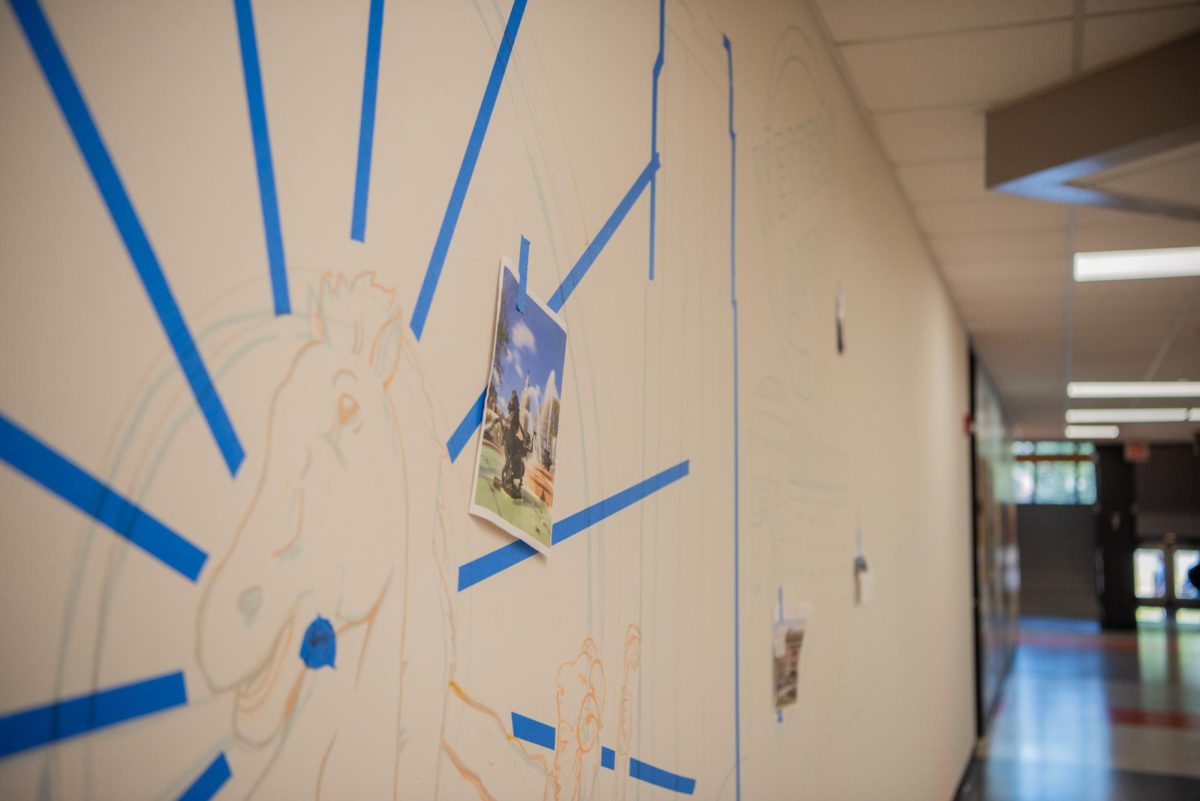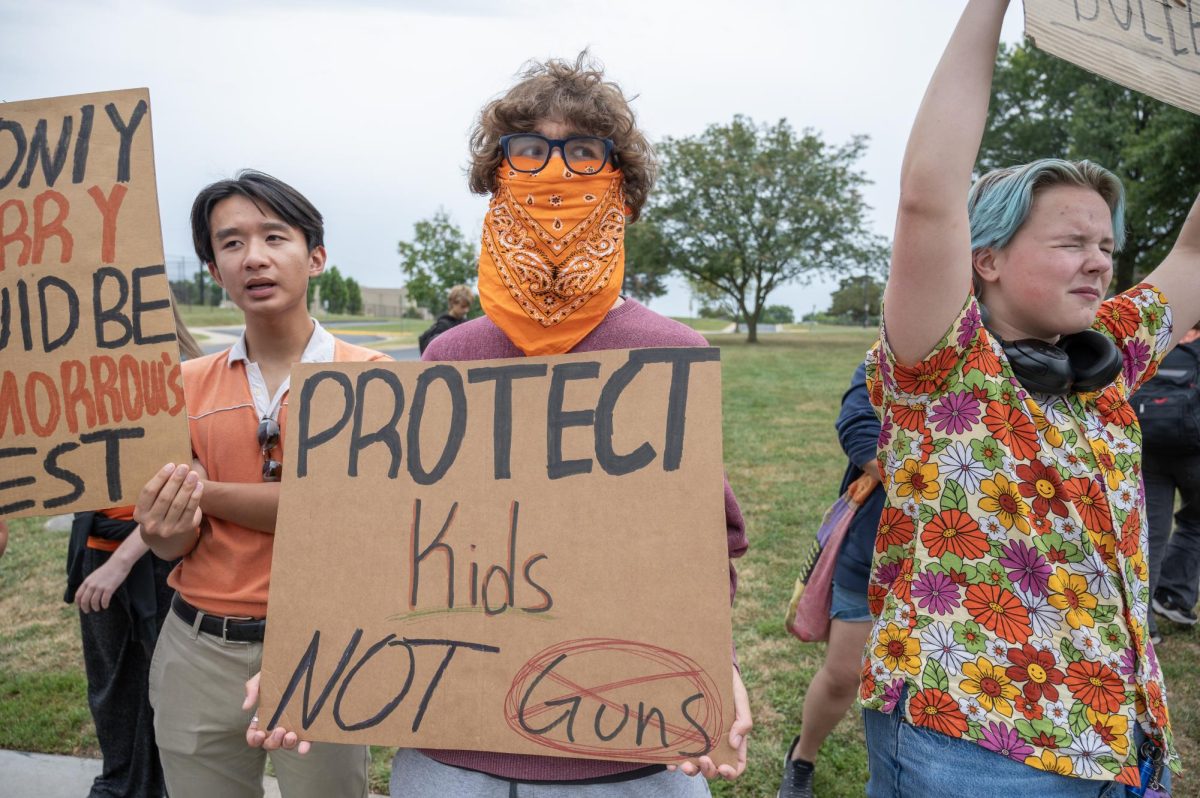After significant cuts in the district budget last year and more cuts projected for next year, students will no longer be able to ignore the effects.
Most students never noticed the $1.1 million that was cut from the district’s budget last year or the $10.6 million that was cut this year. Students didn’t notice that, across the district, 20 high school teaching positions were cut or that the budget for library books was cut in half.
“We try to make cuts that least affect the program offerings of students. We did that last year, and I don’t know if you really noticed much after we did the first $10.6 million. That was by design. We tried not to affect students,” said Tim Rooney, budget and finance manager for the Shawnee Mission School District.
But with talk of cutting another $10 million for next year, students are bound to notice the changes. According to Rooney, the school board has not decided what will be cut for next year, but any part of the district could be affected.
“Each successive layer of cuts is going to get closer and closer to the classroom. You’re going to see larger class sizes, fewer offerings. There are various programs we offer throughout the district; we may not be able to offer those. Just about every aspect of the school district could be affected,” Rooney said.
Last year, the Kansas state budget fell short by $459 million. Because 52 percent of the state budget is allocated to public education, a sizable amount of money had to be cut from Kansas public schools. Because there is a cap on how much a local option budget (a county tax that would go directly to JoCo schools) can raise, SMSD was unable to raise more money with to meet their own shortfall.
The state of Kansas is required by law to end the year with a balanced budget, which means they will be forced to cut another $40 million for 2010. This decision was just made last week, so the legislature does not know what will be cut. Education takes a significant amount of the state’s budget, so it could potentially be cut more.
At the state level, nothing is being done about the issue because state senators and representatives cannot decide what changes are best for education across the state.
According to Rep. Jill Quigley, it’s hard to get a lot done in Topeka because all the legislators have different views on the issue.
“You have to decide whether you’re taking a view for what’s best for education for the state or for the district. It’s really hard to do something that would hurt your district,” Quigley said.
Quigley is from the 17th District, which includes Lenexa.
One of the biggest issues across the state is whether to allow districts to raise more money with local option budgets. Currently, a district is not legally allowed to raise more than 31 percent of their budget through a local option budget. SMSD is already raising that 31 percent. The district could potentially be raising more if Johnson County residents voted to increase taxes to provide more money for public schools; however, Kansas law doesn’t allow this.
The Kansas Constitiution states that “the legislature shall provide for intellectual, educational, vocational and scientific improvement by establishing and maintaining public schools, educational institutions and related activities which may be organized and changed in such manner as may be provided by law.” The constitution, however, does not define what a suitable education is, so it is up to the judgement of the individual district.
“I know that there’s a difference of opinion across the state and the standards in Johnson County are pretty darn high. We have a lot of AP classes. Some of those western Kansas schools don’t have enough students or teachers to do AP. So that discussion has been attempted many times, and it’s very hard. In some ways, I think people are afraid to define ‘suitable’ because we may not like the definition. It may be lower than we’re willing to accept, so people have avoided defining it, preferring to let it stay nebulous because it really may be to our advantage to leave it,” Quigley said.
However, in the supreme court case Montoy vs. State, it was decided that “the duty owed by the legislature to each child to furnish him or her with an educational opportunity is equal to that of every other child.” This decision is what put the cap on the local option budget into place.
Legislators from smaller districts across the state don’t want the cap on the local option budget to be raised because they don’t have the community base to raise more money through an increase in the local option budget. So, while it does not hurt or hinder them to have this base raised, they don’t find it fair because students in a larger district may have a better education because their school has access to more money and, therefore, a better education.
“It’s kind of like if you were standing in line at the grocery store, and the fellow in front of you was buying a bottle of milk, and you were buying a bottle of milk and your charge was $10 and his charge was 50 cents. That’s not fair.Education should not be based on how much valuation there is in the community where you live. It should be the same, not only for you in excellence, but it should be the same in how much it costs tax payers to pay for your education,” Rep. Marti Crows of Leavenworth said.
The district will not make a decision about how much money is going to be cut for next year until the budget meeting in mid-February. They will also announce proposed cuts at that time. Because they are looking to cut about $10 million from the budget, any of the programs the district currently provides could potentially be cut. Anything from teachers to sports and arts could be cut.
“Do you know the story of the boiling frog? The change is so gradual that the frog doesn’t know that the water temperature changes. But if you boil the water then put the frog in, it would jump out and save its life,” Principal Bill Harrington said. “You guys are the victim of the boiling frog story. You wouldn’t know that if six years ago, freshman English classes had 18 to 20 kids in them. And then the following year maybe they had 22; then the next year maybe they had 24. Now you’re in a freshman English class, and it’s got 28. And next year you’re in a class that’s got 30. You just don’t sense it. But that’s what’s happening to you. It’s exactly what’s happening.”
-Maria Davison, Rachel Ferencz and Lauren Komer



